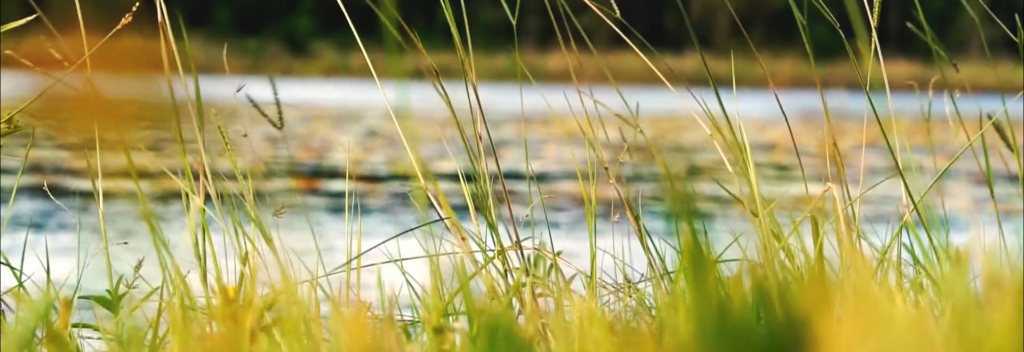
Water Activities in the Central Platte NRD
Water management in Nebraska involves a complex system of rules and management authorities. In 1987, the Central Platte NRD implemented groundwater management plans to address water quality and water quantity issues throughout the District. Both plans have evolved over the years to reflect new rules and regulations, management practices, and partnerships with local, state, and federal agencies to better protect groundwater.

Management Plans and Agreements
In 1987, the directors established the Groundwater Management Plan, with a phased program to implement such controls when they are needed. The maximum acceptable decline ranges from 10' in the eastern end of the District to 30' in portions of the western end of the district. If the water table falls to 50% of that maximum decline Phase II would go into effect for any area or areas affected, triggering mandatory reductions in irrigated acres and establishing spacing limits for new irrigation wells.
Further declines to 70%, 90% & 100% of the maximum acceptable decline will trigger Phase III, IV & V controls respectively, mandating additional cutbacks in irrigated acreage and increased spacing limits for new wells. Because of the differences in the aquifer depth and conditions, some areas could be in the higher phases while other areas may always be in Phase I.
Changes to Rules & Regulations In 2017, the two major changes were the enforcement of cease & desist procedures and removal of the 2 in 10 irrigation rule. Additions made in 2018: language regarding wells, a timeline for transfer applications, changed the number of years transfers are not allowed from 2 to 5 years within a GWMA where declines are more than the 25% allowable level.
The Summary of Water Use is a compilation of records, statistics, and historic conditions of water use which have been tracked by the Central Platte NRD for calendar year 2024. All information supplied for this summary is organized within a GIS database complete with the locations, attributes, and metadata necessary for the 2025 Platte Basin meeting.
2025: Upper Platte Basin Wide Drought Plan
The Second Increment Basin-Wide Plan for Joint Integrated Water Resources Management of Overappropriated Portions of the Platte River Basin, was developed by the Platte Basin Natural Resources Districts (North Platte, South Platte, Central Platte, Twin Platte, Tri-Basin NRDs) and the Nebraska Dept. of Natural Resources. Geographic area of the Plan is the Nebraska portion of the Platte River surface water basin beginning at the Nebraska-Wyoming State line and ending at the Kearney Canal Diversion, at Elm Creek. The Plan includes: 1) introduction; 2) planning process; 3) activities of the first increment; 4) goals, objectives, and action items; 5) monitoring. The plan does not include controls.
Further information may be requested from CPNRD at (308) 385-6282, NeDNR's website dnr.nebraska.gov or call (402) 471-2363.
In 2018, JEO was hired ($100,000) to develop CPNRD’s Drought Management Plan. Objectives are to identify District vulnerabilities, create a methodology for monitoring drought conditions, and identify processes to respond to and manage the impacts of future drought events. The Plan assists CPNRD in water resources management for a more sustainable and stable water supply for all users across the district. The NRD received a Water Sustainability Fund grant from the NRC to develop the plan. A Drought Tournament was held in 2019 for drought mitigation planning. CPNRD’s Extreme Event Reporter (GIS-based tools) was presented in September 2021.
The Second Increment Joint Integrated Management Plan (IMP) is cooperatively developed by Central Platte NRD and the Nebraska Department of Natural Resources (NeDNR). The geographic area is the entirety of the land area within the District boundary. The IMP includes Authority; Maps/Management Area Boundaries; Vision; Funding; Science/Methods; First Increment Accomplishments; Goals/Objectives; and Action Items, which include Controls/Triggers, and Monitoring/Evaluation.
CPNRD's groundwater controls: 1) groundwater moratorium, 2) certification of groundwater uses, 3) groundwater variances, 4) groundwater transfers, and 5) municipal and industrial accounting.
NeDNR's surface water controls: 1) maintaining the moratorium on new surface water appropriations and on expanded surface water uses; 2) transfers of appropriations are subject to statutory criteria and Department rules; 3) continuation of surface water administration and monitoring of use of surface water; 4) no additional requirements of surface water appropriators to use additional conservation measures, and 5) no other reasonable restrictions on surface water use.
Full text at dnr.nebraska.gov or by request from CPNRD at (308) 385-6282 or NeDNR at (402) 471-2363.
Cooperative Hydrology Study (COHYST)
In 1997, Nebraska Governor Ben Nelson and the governors of Wyoming & Colorado signed the Platte River Recovery Implementation Program (PRRIP) with the U.S. Dept. of Interior. Questions arose about potential impacts on activities along the Platte and it was apparent that data wasn’t available to use. With funding from a Nebraska Environmental Trust grant, CPNRD and a coalition of state and local agencies, water, and environmental organizations developed the Cooperative Hydrology Study (COHYST); to improve the understanding of the hydrological and geological conditions in the Basin. The models provide scientifically supportable databases, analyses, and details to more accurately identify and quantify the relationship between the Platte River and adjacent groundwater resource. It also provides valuable information necessary to develop a plan to address "new depletions" to flows in the central stretch of the Platte River.
The Study assists Nebraska in several avenues: to meet its obligation under the PRRIP to analyze proposed activities, assists NRDs along the Platte River in providing appropriate regulation and management, provides a basis to develop policy and procedures related to ground/surface water, and helps analyze other programs. COHYST computer databases quantify existing groundwater use, river data, and aquifer data in the Platte River Basin. The databases are used to develop regional computer models to provide an understanding of the groundwater flow system, inter-relationships between ground & surface water, geology of the region, and other characteristics of the groundwater aquifer.
The models represent real-world features such as rivers, streams, groundwater aquifers, groundwater pumping, or canals as a set of mathematical equations, which reproduce observed water levels and stream flows; and are tools to predict how changes to or "stresses" on the groundwater system may impact flows in the Platte River. Stresses are additions and subtractions of water from the groundwater system, including pumping from wells, evapotranspiration by vegetation, aquifer storage and recovery, flow to drains, groundwater recharge from precipitation, deep percolation from irrigation, enhanced recharge due to certain land uses, recharge from canal and lateral leakage, and recharge from lakes and reservoirs. The models also help predict how water supply or proposed conservation projects affect groundwater levels and river flows.
Changes in streamflow are estimated as a result of new irrigated acres between 1997-2005. Changes in streamflow were made for reaches of the Platte River above Elm Creek, NE. In 2017, Olsson engineering firm reported that results of the Hydrogeologic Evaluation and Subregional Groundwater Modeling show that excess flows from the Dawson County canals are being returned to the Platte River more quickly than anticipated; which is a positive effect.
The PRRIP was developed by the federal government along with the basin states of Nebraska, Colorado, and Wyoming and signed in 2006 to build a framework for a long-term Program that will satisfy Endangered Species Act (ESA) requirements for water users in the basin. The first PRRIP increment, planned to last 13 years, includes completion of water projects expected to improve flows in the central Platte by an average of 130,000-150,000 ac/ft annually. A second Program element is the protection and maintenance of 10,000 acres of habitat during the first increment, ultimately working toward a 29,000-acre goal.
On Dec. 21, 2019, President Trump signed two spending packages that included the PRRIP Extension Act; extending the Program for 13 more years. The Water Service Agreements for the Program with Central Platte NRD, NPPD, and Central NPP&ID are similar in their term and payment rates for recharge water. CPNRD’s agreement for groundwater recharge runs through the end of 2024 and starts with a 2020 price per acre-foot of water of $32.87 and escalates at 3% per year with a cap of 5,000 acre-feet.
March 2020 Update: The GC discussed the Upper Platte Basin Robust Review results and Second Increment planning. Nebraska is in full compliance with its New Depletions Plan and is achieving Milestone 9 of the Program’s extension document. Future Robust Reviews are planned for 2023 and 2027. The Executive Director’s office discussed the 2019 “State of the Platte” report, the Independent Science Advisory Committee’s response to it, and plans on how to move forward with review and update of Platte River target flows. Jason Farnsworth, executive director, was appointed as the Program’s Fund Advisory Committee member to the Platte River Resilience Fund.
Instream Flow Rights
Central Platte NRD holds instream flow water rights on the Platte River to protect and enhance wildlife; with the original flow water rights having a priority date of July 25, 1990. The NRD complied with the required 15-year review in 2009 and was granted instream flow rights until the next review in 2024. A series of instream flow water rights on portions of the Platte River to protect minimum flows in the river for fish and wildlife purposes was approved on July 2, 1992, by NDWR (now NeDNR). Flows specified by the instream flow water rights are a factor in providing bird habitat on the Platte, as well as habitat for food sources consumed by those birds.
The rights have no effect on levels in upstream storage reservoirs such as Lake McConaughy nor do they take water away from existing irrigators. Other water rights already existing on the river are senior to the rights; but the flows specified by the instream flow water rights must be met before any future project could take water from the Platte. CPNRD’s application came after extensive study by the NRD in response to concerns about low flows, especially during the dry summer periods which are dangerous to the fish and wildlife that depend on the river.
The study indicated that the instream flow water rights wouldn’t solve the existing low flow problems, but could be effective in preventing some additional low flow periods by assuring that minimum flows are met before future projects could withdraw water from the Platte. A public hearing was held by CPNRD in March 1989 on proposed instream flow rates, timing, segments and uses for a proposed water right. While there was considerable testimony applauding CPNRD for seeking the instream flow water right, there was a division of opinion about the flow rates, dates and river segments being proposed. CPNRD met with interested parties to arrive at the series of flow application to the NeDNR. Because of insufficient detailed data available to make a determination of water and habitat needs for selection and nesting by the least tern and piping plover and stopover by ducks and geese, CPNRD did not make its applications for water rights.
On July 25, 1990, six applications for Platte River instream flow water rights to benefit wildlife were filed. Together, the applications sought to protect flows varying from 500-1,500 cfs at specified time periods in certain reaches of the river, extending from near Lexington to near Columbus. The applications were filed to benefit sandhill cranes, bald eagles and three species designated as threatened or endangered: least terns, piping plovers and whooping cranes. The NeDNR conducted a hearing on the six applications from July 1-September 25, 1991. Eighteen parties filed as objectors including: State of Wyoming, several environmental organizations, power and irrigation interests and several NRDs. The Audubon Society and Sierra Club changed their status to proponents during the hearing, two objectors withdrew and four parties were dismissed before the conclusion of the hearing. NeDNR issued a ruling on July 2, 1992, that three of the water right applications be granted outright and a fourth be modified from the NRD’s request. Two of the applications with flows for the bald eagle were denied.
Section 2-3277 of the Nebraska Natural Resources District Act requires each NRD to prepare and adopt five-year Long Range Implementation Plans to “prepare and adopt any individual project plans as it deems necessary to carry out projects approved by the District.”
This plan summarizes the planned district activities and includes projections of financial, manpower and land right needs of the district for the next five years, as well as a specific needs assessment upon which the NRD’s Long Range Implementation Plan is reviewed and updated.
2021-2031 Master Plan
Nebraska’s Natural Resources Districts are required to file a Comprehensive Resources Plan, or Master Plan, at least every ten years in accordance with state statute (Section 2-3276). The statute also declares that “no state funds shall be allocated or disbursed to a district unless that district has submitted its master plan… and until the disbursing agency has determined that such funds are for plans, facilities, works, and programs which are in conformance with the plans of the agency.”
The Natural Resources Committee for the Nebraska Legislature requested this Progress Report to carry out the purpose of Legislative Resolution 23 (LR23) to conduct an interim study to assess the progress of Natural Resources Districts (NRDs) relative to the purposes for the creation and existence of the 23 NRDs throughout Nebraska.
-
Main Office
- 215 Kaufman Ave, Grand Island, NE 68803 308-385-6282
-
Cozad Office
- 75887 Road 414, Cozad, NE 69130 308-380-8943
-
NRCS Field Offices (Ext. 3)
- Central City 308-946-3035
- Kearney 308-237-3118
- Grand Island 308-395-8586
- Lexington 308-324-6314
- Osceola 402-747-2111




